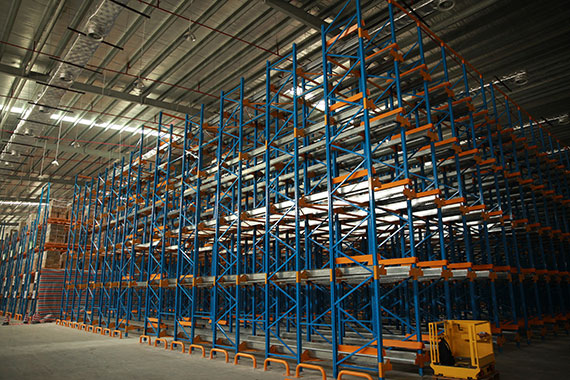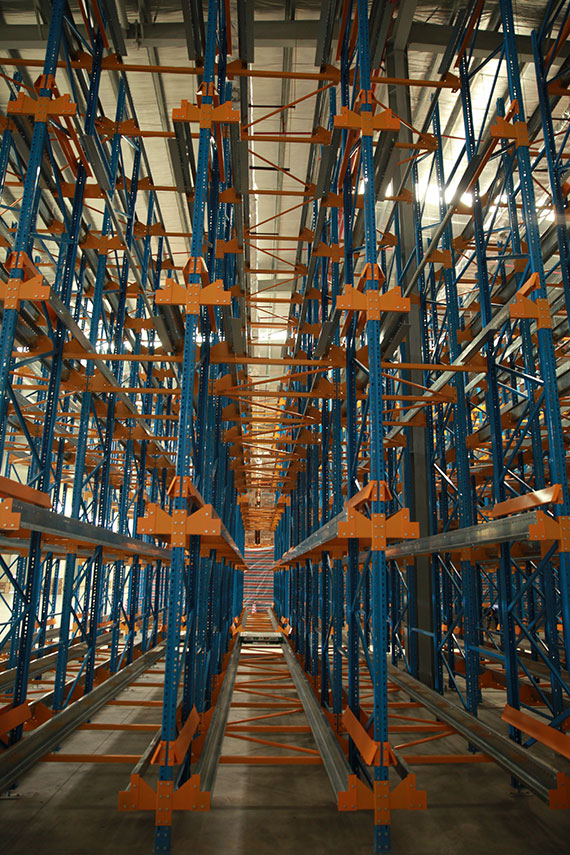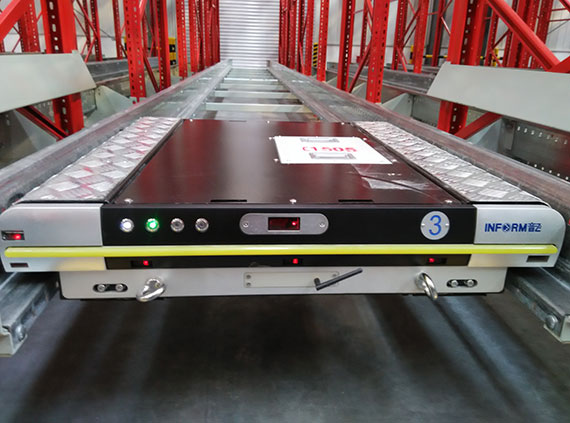Pallet Racking
Selective Pallet Racking is the most widely used system for storing palletized goods. Each pallet is individually supported and independently accessible. A standard counter balance truck can be used in aisles 3.5 to 4 meters wide. Reach trucks can work in aisles only 2.5 meters wide. Pallet racking arranged in this way gives high quality storage but may only utilized 40% of the available floor space, the rest being aisles. However, fast throughput and ease of loading and unloading make this type of storage extremely popular. A wide range of accessories are available as options.









Very Narrow Aisle racking is similar to Selective racking and is commonly referred to as VNA. It is an effective method of increasing pallet storage within a given area with the advantages of selective racking. Aisle space can be reduced up to 50% compared to traditional forklifts. This type of racking is operated with special forklift and is guided by wire or rails through the aisle allowing faster and easier operation. This system provides 100 % product selectivity.


Double Deep Racking is stores two pallets deep, or four pallets deep in a double entry rack. This system reduces the aisle to rack ratio but also reduces pallet selectivity, increasing storage density. Only 50% of pallet can be access immediately, on a FILO (First In Last Out) basis and makes good use of all available locations. This system is best used when each SKU has several pallets. The system requires the use of a special reach truck with either dual pantograph or slide fork attachments.


Push Back racking is a rack system that combines standard selective pallet racking with a cart and rail system that sets on horizontal load beams, but the advantage is you can have 2, 3, 4, 5, up to 7 pallet positions deep. It can go multiple levels high. As a pallet is loaded from the front, it pushes the pallet behind it back one position. When unloading, the front pallet is removed and the rear pallets automatically roll forward in a slow and controlled speed to the front picking position. This allows for easily accessible Last-In-First-Out (LIFO) storage. Operators can store product from 2-7 pallets deep, with front-only loading from a single aisle. Push Back offers more versatile storage than Drive-In rack because each lane flows independently and vertical storage operates separately from lanes below. Multiple pick facings for a variety of SKUs can be stored and retrieved without disturbing other product above or below in a single-lane or double-lane format.

Gravity pallet flow rack work on a first-in-first-out (FIFO) storage. Pallets are loaded onto delicated lanes on inclined gravity rollers which are set at a fixed gradient. Each flow lane includes brake roller to gently control the speed movement. When a pallet is removed, the pallet behind it will move forward to the unloading position. Stock rotation is therefore automatic.



Drive-In / Drive-Thru pallet racking systems are a cost effective solution to high density storage. This system has pallet support rails running the depth of the racks for pallet placement. Eliminating aisles produces a higher storage density at the expense of selectivity. Each pallet is supported so damage from crushing is eliminated. Speed can be further increased by the provision of lead-in rails and guide rails within the lanes. This systems offer up to 85% floor space utilization.
Drive-In; Load and unload from the same side, creating a LAST- IN- FIRST- OUT (LIFO) storage system.
Drive-Thru; Load from one side and unload from the other side, creating a FIRST- IN- FIRST- OUT (FIFO) storage system. M.H.E. can enter from either side. This is an excellent option for freezers, providing low cost bulk storage along with guaranteed stock rotations.








The shuttle racking system is a storage solution carried out using motorized shuttle. Unit pallet and material are placed on the shuttle and being delivered from the entrance to exit or ranked in pre-set isometric space. This shuttle carrier enables automated movement in racking channels once command to initiate shuttle’s activity is given by operator through device. Thus, aisle had been eliminated due to forklift truck does not need to access into the lanes. Only the handling of goods outside the racks requires the use of forklift truck or other storage equipment.
This system brings advantages like warehouse space optimization, high storage density, high stability, reduction in cost of manpower as well as efficient working ability since it can work either as LAST- IN- FIRST- OUT (LIFO) or FIRST- IN- FIRST- OUT (FIFO).



